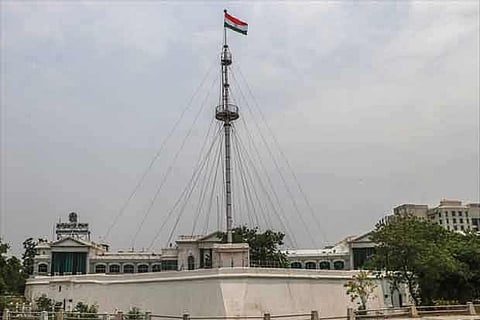

Chennai
FORT St George is the place where the modern city of Madras or Chennai was born. According to historians, the city was formally established on August 22, 1639, when the English East India Company obtained, on lease, from the local ruler, a sandy strip of land near the beach, for its trading activities. Soon, the British founded a new settlement on this land that was around three miles long and one mile wide. For the security of the inhabitants of this settlement, they began to fortify it.
Simultaneously, they built houses and offices within it.
By April 23, 1640, at least 15 thatched houses and one office building were erected. Since April 23 is celebrated as St George’s Day in honour of the patron-saint of England, the settlement was named after him on this day. Slowly but steadily, this new settlement added to its size by including within its domain a string of neighbouring villages which now constitute the main residential colonies of the city.
From the mid-17th Century, Fort St George evolved as a major seat of British power in Asia and at one time, even parts of Bengal and South East Asia were under the control of the officers within this Fort. The St. Mary’s Church, built in 1680 within the Fort, is the first Anglican Church in India.
The Fort includes some of the largest and oldest surviving Army barracks in the whole of South Asia. The biggest among them is the King’s Barracks. The Museum within the Fort showcases the history of the colonial rule in India.
Built in 1790, this building was initially a Public Exchange for the English merchants who engaged in private trade in addition to the trade carried out by the East India Company. The roof of this building housed the city’s first lighthouse from 1796 to 1841. The most prominent building in the Fort is the Secretariat built in the late seventeenth century. After 1947, this building has been housing several government offices, including the office of Tamil Nadu’s Chief Minister.
Not many among the present generation, are aware that for many centuries, the Fort St. George was a self-contained township with streets bearing English names such as Charles Street and St Thomas Street, residences, shops, Army Barracks an arsenal and a church.
Hence the Fort was hailed as a town within a town. Presently, it is a cluster of government offices that you visit, with an application or petition, to solve your problems. Besides these offices, there are a few residences within the Fort even now.
Most of the structures within the Fort are protected monuments under the Archaeological Survey of India. But many of these buildings are currently being used by different government agencies such as the Secretariat, the Army and the Navy. Some parts of the campus, especially in the rear, are very dirty. A few buildings are in a semi-dilapidated condition. For the general public, the campus is not easily accessible due to the rigid security system, thanks to the ministers’ offices in the Secretariat.
There have been several unsuccessful attempts to move the Secretariat to a more spacious office outside the Fort. All the stakeholders should join together to clean and restore all the heritage structures within the campus.
—The author is a well-known archaeologist and Tamil Nadu State Convener, INTACH
Visit news.dtnext.in to explore our interactive epaper!
Download the DT Next app for more exciting features!
Click here for iOS
Click here for Android